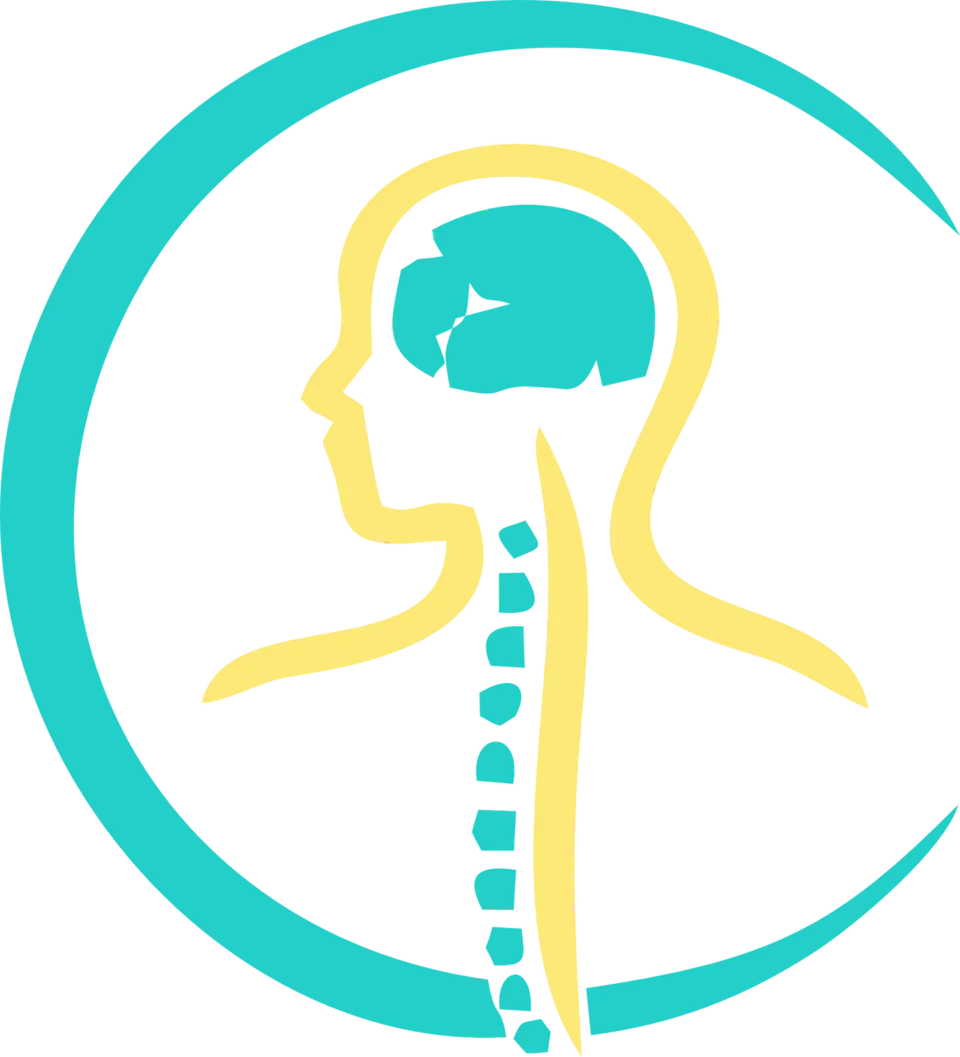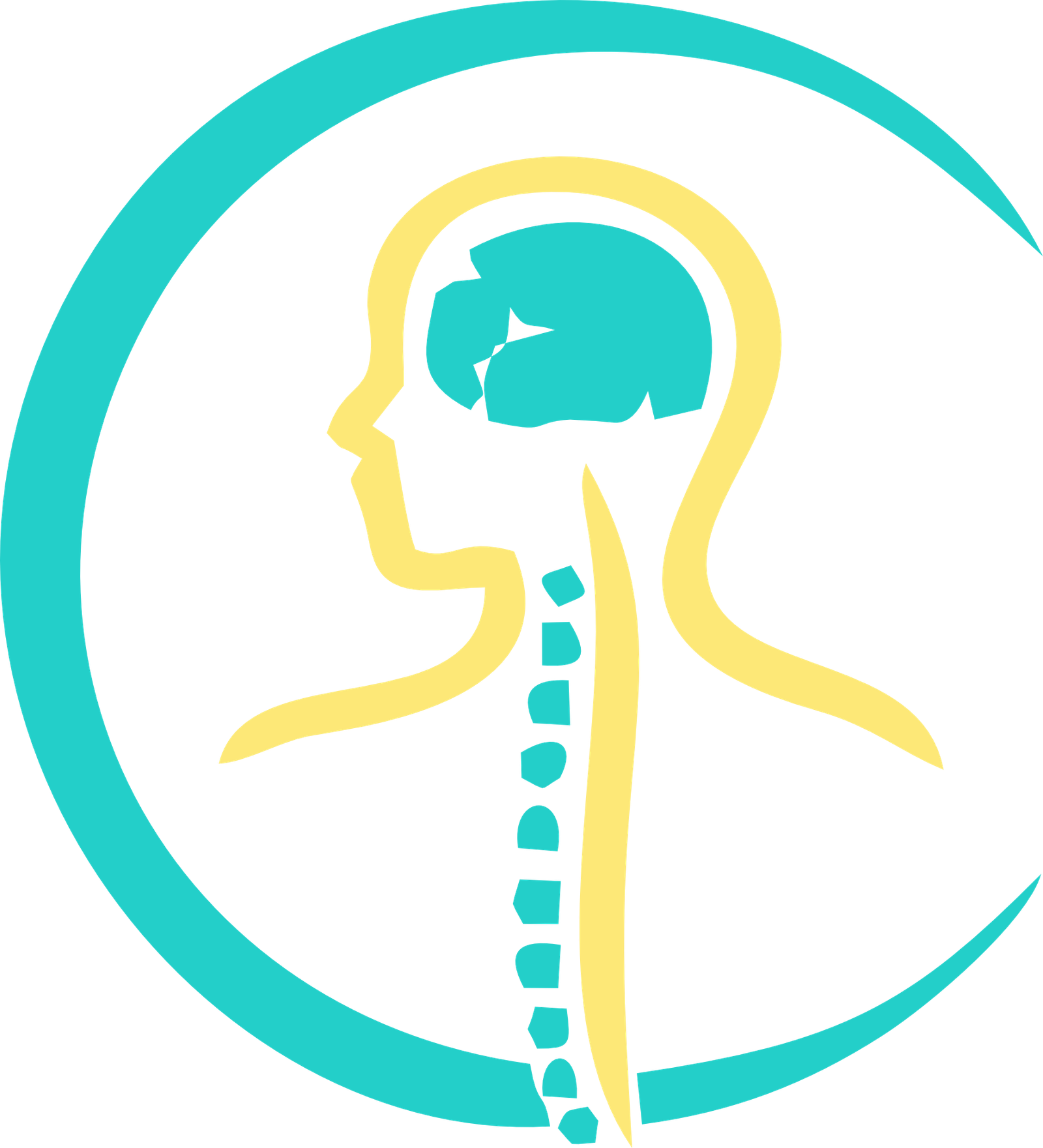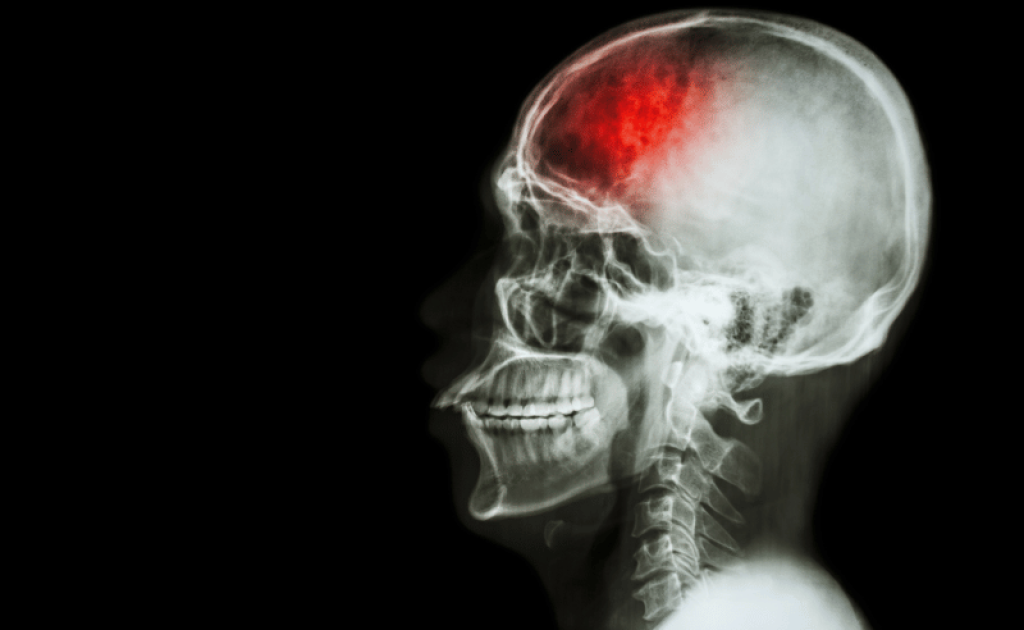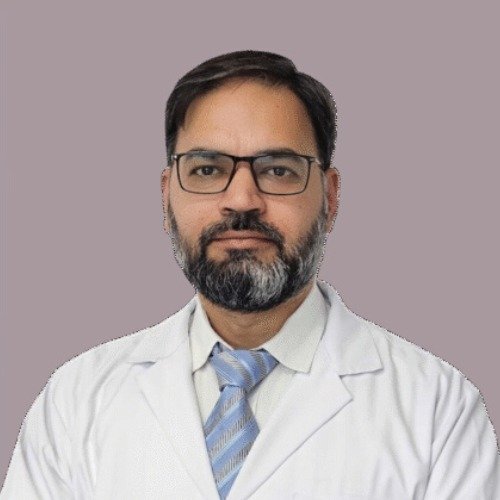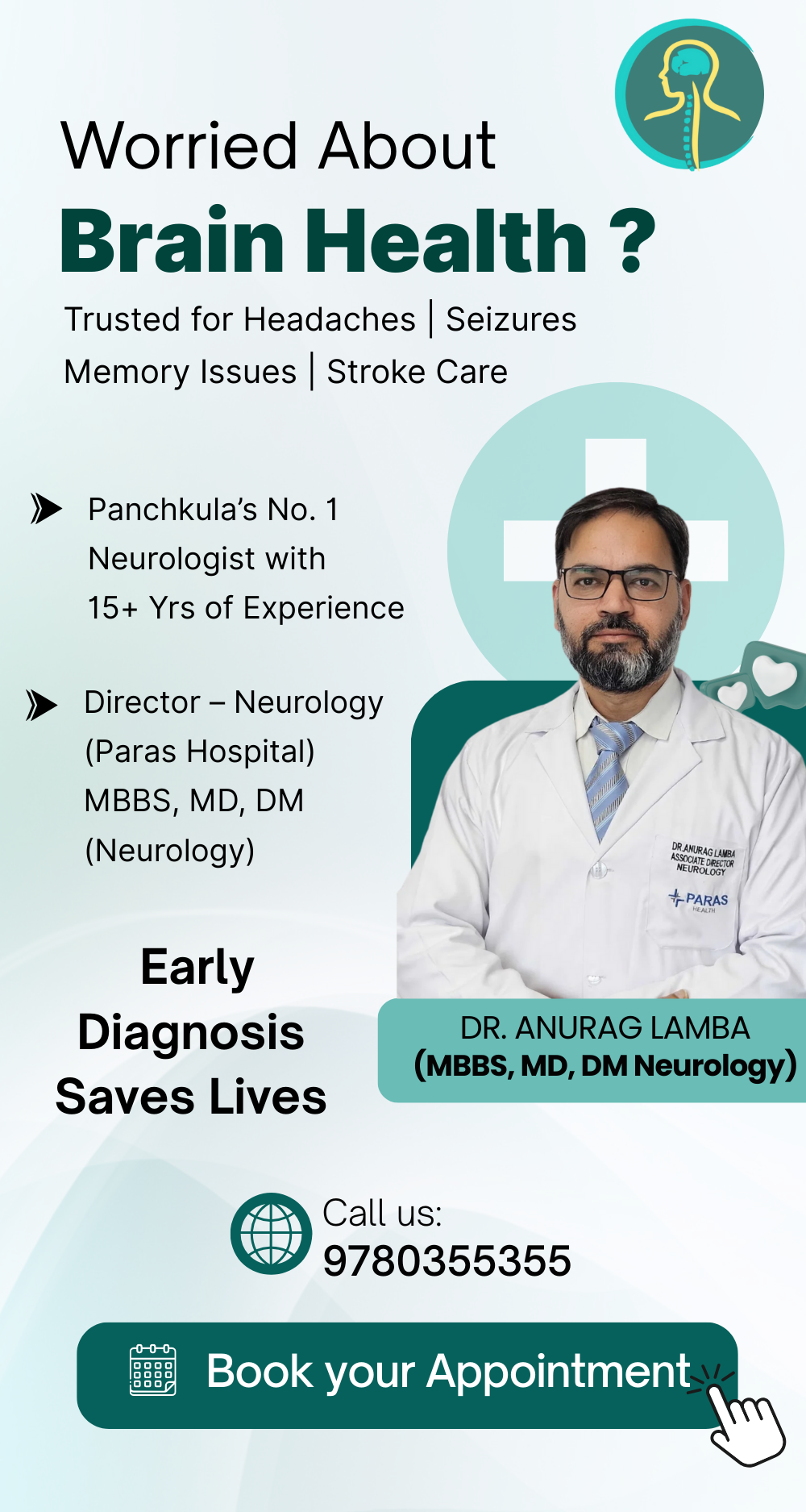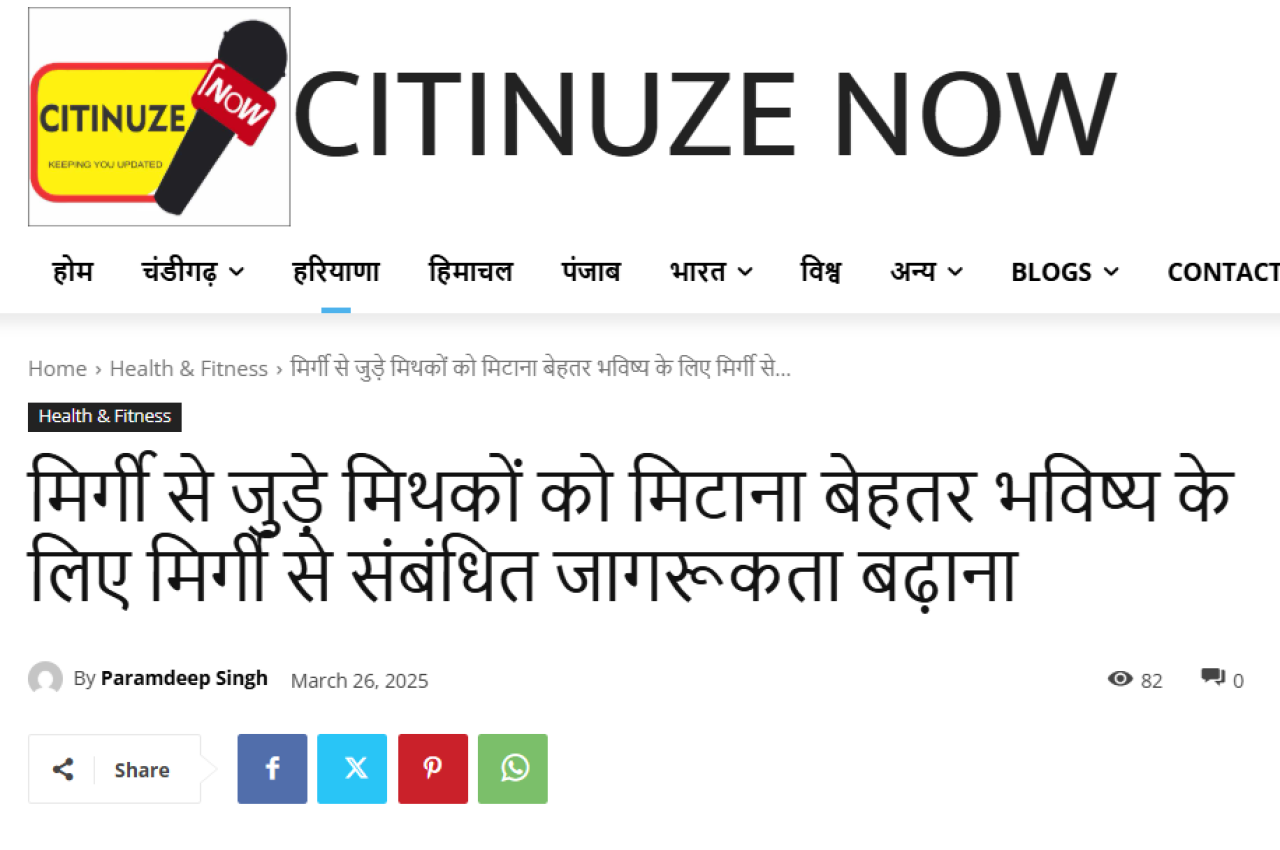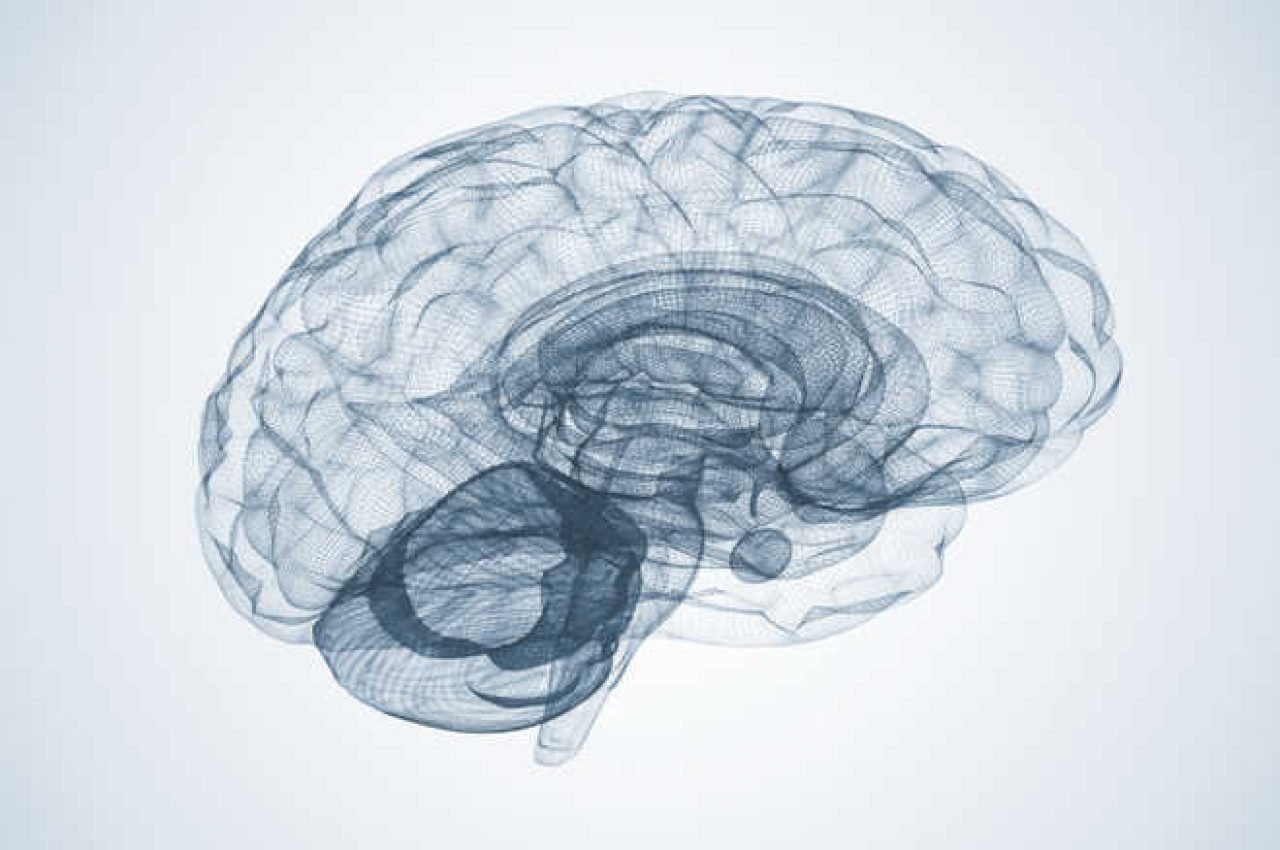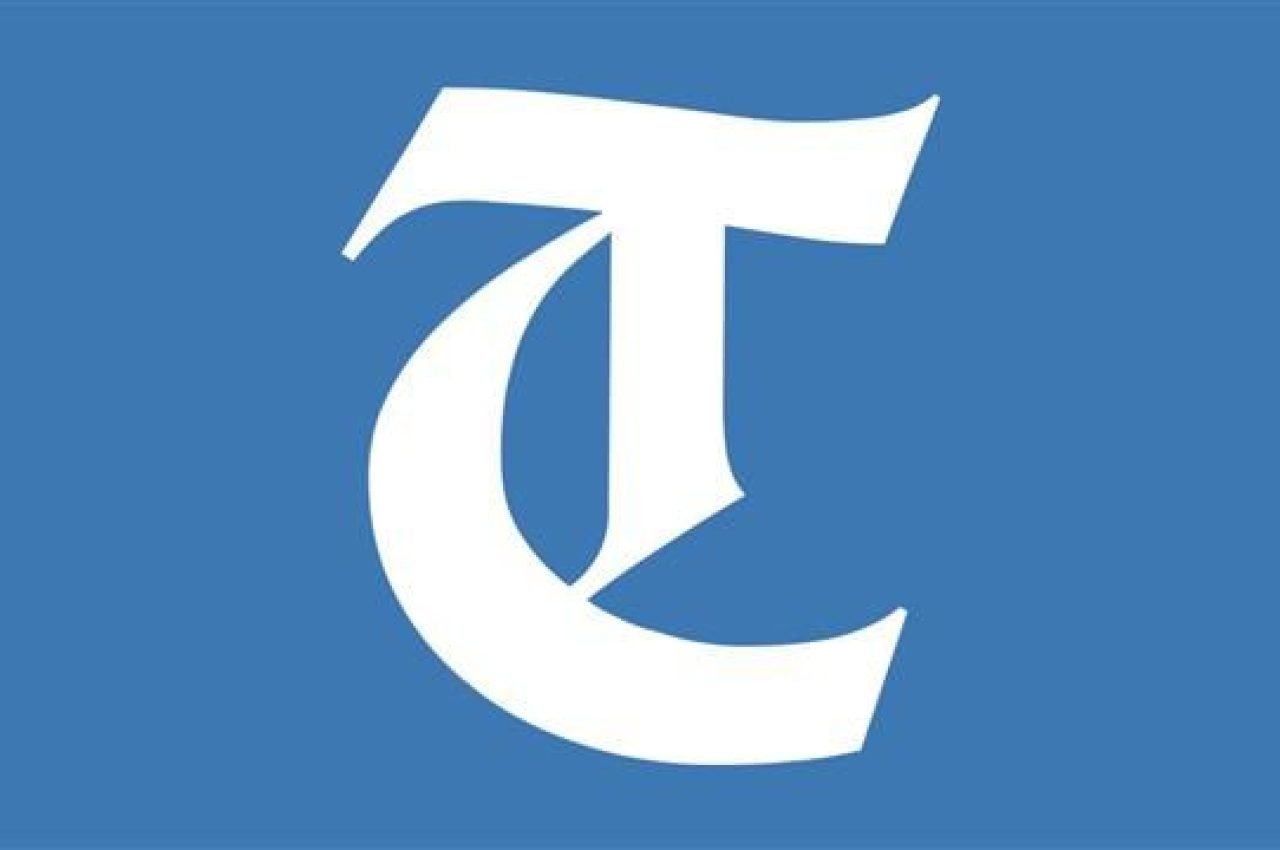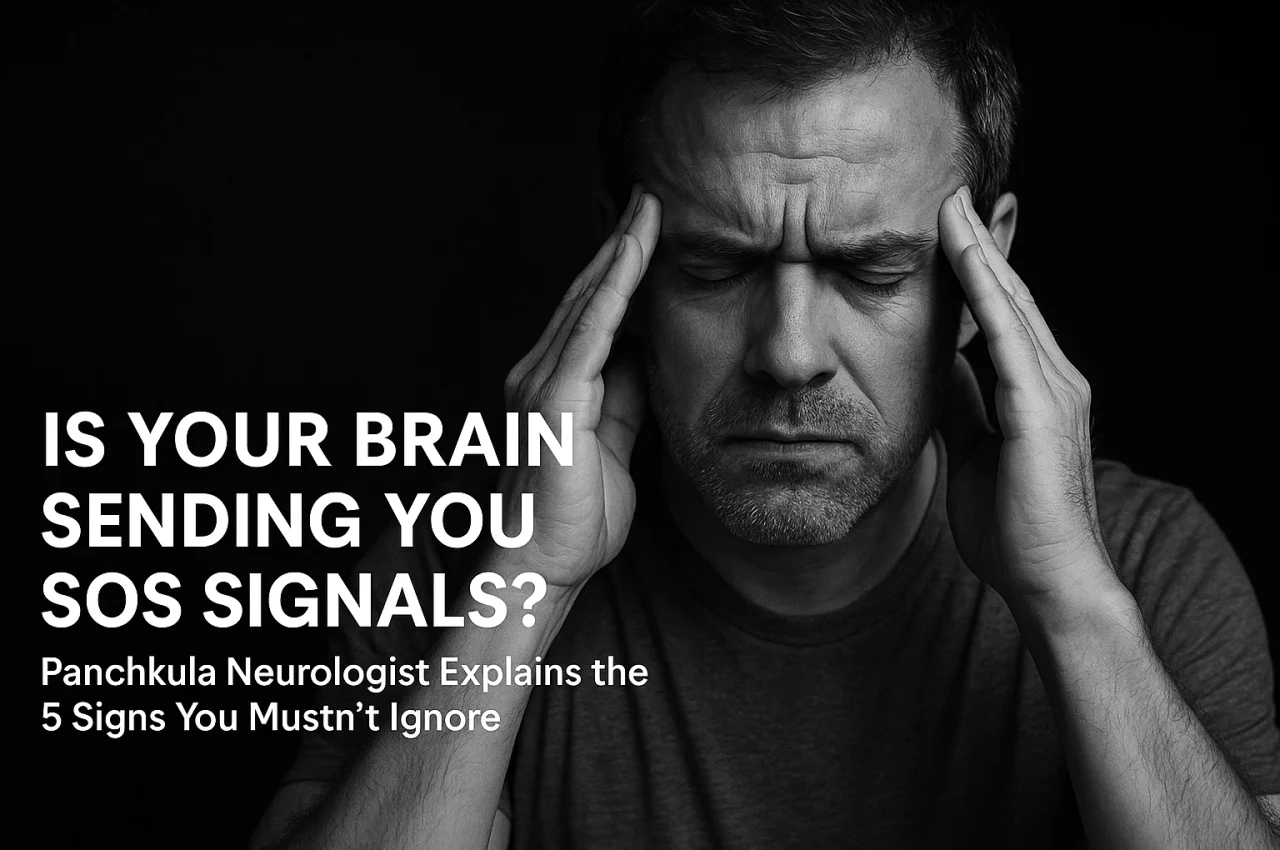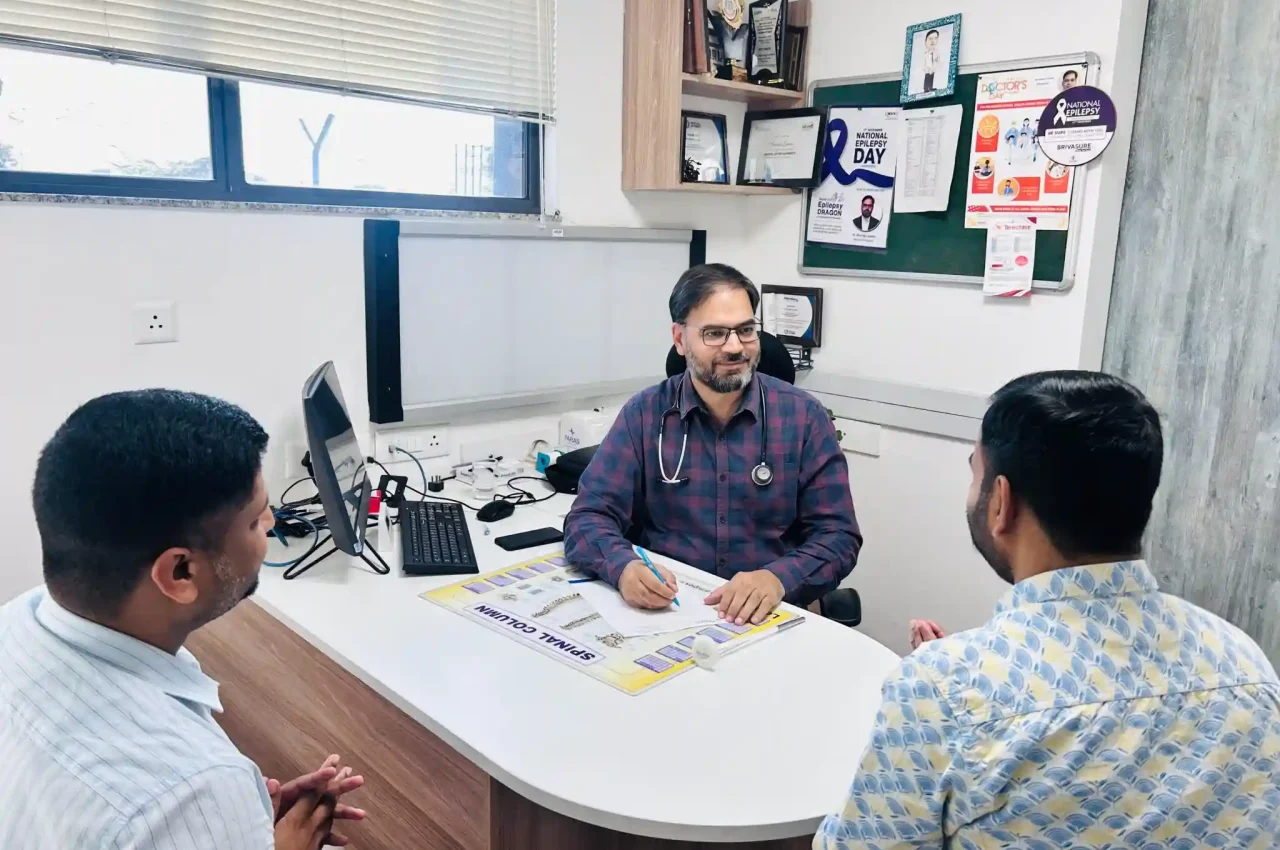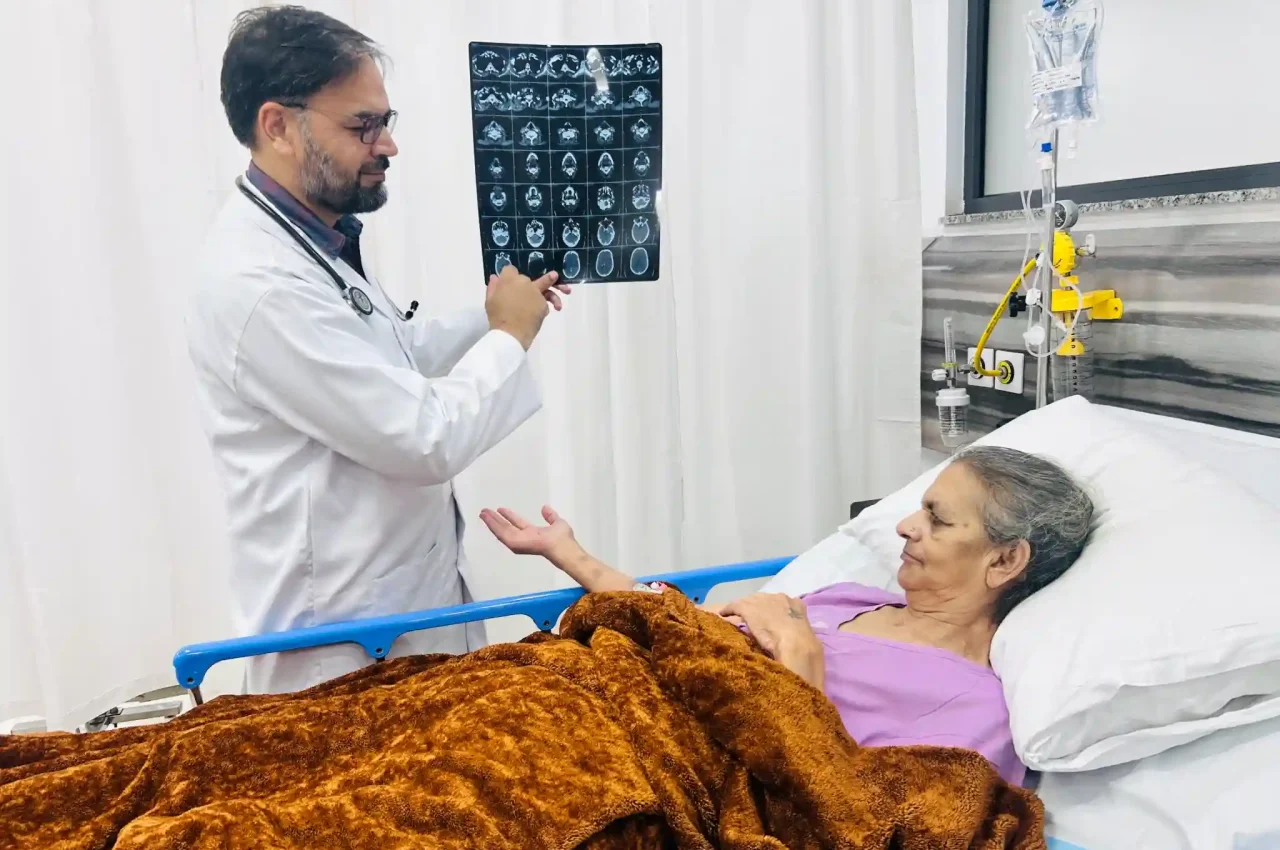It was an ordinary Sunday in Panchkula. 52-year-old Rajesh Mehta had just returned from the sabzi mandi, sipping chai with his daughter. Suddenly, he froze. His mouth drooped. Words came out garbled. His right arm slipped off the table.
His family thought it was a momentary weakness — maybe low BP. But what happened next changed their lives forever.
This is the true story of a stroke, brain attack that gives no warning, and how Dr. Anurag Lamba, Panchkula’s leading neurologist, helped this father survive and recover.
What Is a Stroke And Why Every Second Matters
A stroke, or “brain attack,” happens when blood supply to a part of the brain gets blocked or a blood vessel bursts. Without oxygen, brain cells start dying within minutes.
- Ischemic stroke: Caused by a clot. Most common type.
- Hemorrhagic stroke: Caused by bleeding in the brain.
Time = brain. For every minute a stroke is untreated, 1.9 million brain cells may die [NIH study]. That’s why it’s one of the top causes of long-term disability and death in India.
Back to Rajesh’s Story, The Race Against the Clock
His wife noticed the symptoms but didn’t recognize them as a stroke. Thankfully, a neighbor had seen something similar in her uncle and insisted: “Get to a neurologist. Now.”
Rajesh was rushed to Dr. Anurag Lamba at a Panchkula hospital just 50 minutes after his first symptom. On arrival, Dr. Anurag and his team activated a ‘code stroke’ protocol – no delay.
How Dr. Anurag Diagnosed It So Quickly
Using the FAST method, Dr. Anurag assessed him immediately:
- Face drooping? Yes.
- Arm weakness? Yes.
- Speech slurred? Yes.
- Time to act? Absolutely.
An emergency CT scan ruled out bleeding, confirming an ischemic stroke. He was eligible for clot-busting thrombolysis treatment, but only because he came in time, within the 4.5-hour window.
“Stroke treatment has a golden window. Beyond that, you risk permanent damage,” explains Dr. Anurag.
Clot-Busting Injection: What It Does and Who Can Get It
The injection, called tPA (tissue plasminogen activator), dissolves the clot and restores blood flow. But not every patient qualifies. Criteria include:
- Arrival within 4.5 hours of symptom onset
- No bleeding or recent surgeries
- Normal CT scan
Rajesh met all criteria. The injection was given within 80 minutes of onset – textbook ideal.
Within hours, his speech began returning. By Day 3, he was walking with help. By Day 10, he was discharged with physiotherapy guidance.
Signs of Stroke Everyone in Panchkula Must Know
Dr. Anurag emphasizes that stroke is treatable – but only if caught fast. Recognize these signs:
- Sudden numbness or weakness in face, arm, leg (especially one side)
- Trouble speaking or understanding
- Blurred or lost vision in one or both eyes
- Severe headache with no known cause
- Sudden imbalance or dizziness
Don’t wait for it to “go away.” Call emergency and reach a neurologist.
Why Stroke Cases Are Rising in Younger Indians
Once seen mostly in the elderly, strokes are now increasing among people in their 40s and 50s. Common reasons include:
- Uncontrolled diabetes or high BP
- Smoking and alcohol
- Obesity and sedentary lifestyle
- Untreated cholesterol
- High stress and work pressure (sound familiar?)
Panchkula is not immune – and the numbers are rising silently.
What Happens After a Stroke And Why Recovery Depends on Early Care
Rajesh needed:
- Speech therapy
- Physiotherapy for limb strength
- Blood thinners and lifestyle changes
- Follow-ups with Dr. Anurag every month
His daughter said: “We thought we lost him. But Dr. Anurag gave us our Papa back.”
How Dr. Anurag Is Changing Stroke Care in Panchkula
Dr. Anurag Lamba has handled hundreds of stroke cases at his Panchkula neurology clinic. His approach combines:
- Rapid diagnosis with CT/MRI
- Advanced stroke protocols
- 24×7 emergency care network
- Post-stroke rehabilitation with therapists
More importantly, he believes in awareness and prevention — because most strokes can be avoided.
Protect Yourself and Your Family from Stroke
Simple steps can save your life:
- Monitor blood pressure monthly
- Control sugar and cholesterol
- Quit smoking and reduce alcohol
- Walk daily, even 30 mins in your sector park helps
- Get annual check-ups after 40
And above all, know the warning signs. They’re your body’s way of asking for help.
“Stroke doesn’t knock before entering. But if you act fast, you can lock the damage out.”
“Saving a brain takes minutes. Losing it takes seconds.”
Worried about stroke risk? Book a consultation with Dr. Anurag Lamba today.
Disclaimer: This article is for educational purposes only. Please consult a qualified neurologist for diagnosis and treatment options.
